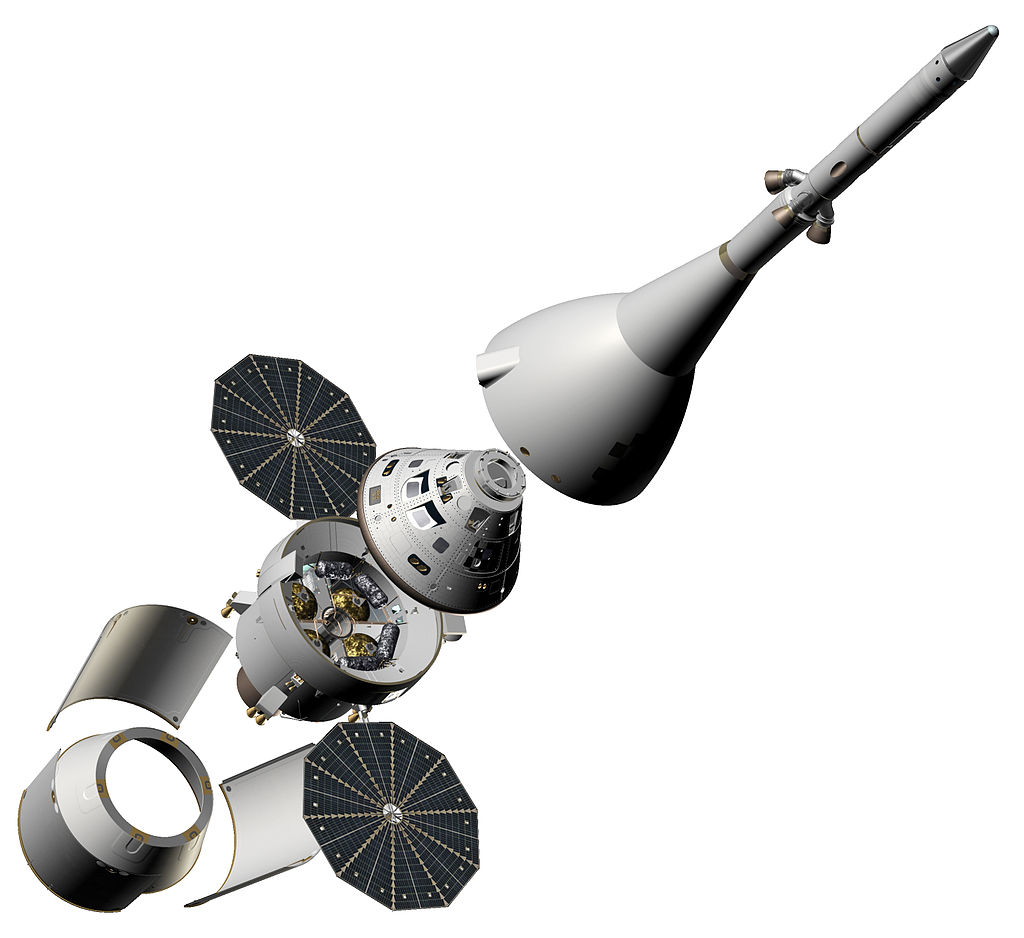The U.S. is developing a new spacecraft called the Orion Multi-Purpose Crew Vehicle (MPCV). This spacecraft is intended to carry a crew of as many as four astronauts. It will be able to carry crews to low-earth orbit and beyond. The Orion will allow manned explorations of asteroids and of Mars. It can also ferry crews and supplies to and from the International Space Station, if necessary.
In 2004, the United States announced plans for the Crew Exploration Vehicle (CEV). The new spacecraft was intended to replace the Space Shuttle program partly because of the crash of the Space Shuttle Columbia. Originally, a spacecraft called the Orbital Space Plane was going to replace the Space Shuttles but it was cancelled and replaced by the CEV. Eventually, the project became the Constellation program and Orion was added to the name of the spacecraft. NASA announced the Orion MPCV in May of 2011. The design of the Orion is based on the earlier CEV from Constellation project that was cancelled. The Orion consists of two main modules.
The Orion command module resembles the Apollo command module and is being constructed at the Michoud Assembly Facility in New Orleans by the Lockheed Martin company. It will have a digital dashboard known as a "glass cockpit." The command module contains an automatic docking system with a manual backup. The Orion service module is based on the Apollo service module The service module will handle life support and propulsion. It is being built by Airbus Defence and Space for the European Space Agency. Together, the two modules are about eleven feet high and about sixteen feet in diameter. The command module and the service module weigh about forty seven thousand pounds. The Orion can spend about twenty one days on a mission. Originally, the capsule was going to land on the ground with a system of airbags but the landing site was changed to an ocean splashdown.
Orion features a Launch Abort System in case there is a problem with the launch or the ascent. A solid-rocket launch abort motor will fire and separate the command module from the service module if there is trouble.
The Orion's first test flight was referred to as Exploration Flight Test 1 (EFT-1). The uncrewed spacecraft was carried aloft on a Delta IV Heavy rocket in December of 2014 for about four and a half hours and it landed in the Pacific Ocean. The Orion will not carry a live crew until 2021 or after.
In 2010, President Obama laid out two major goals for space exploration including a manned exploration of a near-Earth asteroid in the mid-2020s and a manned expedition to Mars in the mid-2030s. The asteroid mission will include the capture of a small asteroid that will be brought into lunar orbit for the manned expedition. For the Mars mission, a Deep Space Habitat will have to be developed and attached to the Orion spacecraft. The NASA budget was revised to include these goals and the Orion spacecraft will be the main vehicle for such missions. The intermediate goal of a manned lunar base that had been part of the Constellation program was canceled.
Artist's exploded view of the Orion spacecraft:
